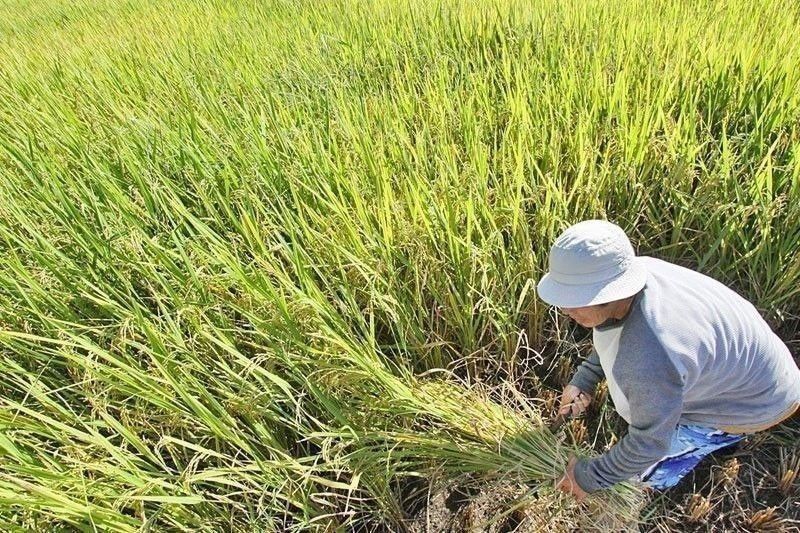PhilRice notes improved rice production in 2020

MANILA, Philippines — Interventions implemented by the Department of Agriculture (DA) have led to higher rice production last year, the Philippine Rice Research Institute (PhilRice) said.
In a statement, PhilRice said programs have supported the record high rice production of 19.3 million metric tons in 2020 through certified inbred seeds, hybrid rice seeds, and fertilizers.
“Analysis released by DA-PhilRice showed that the sustained government interventions through the Rice Competitiveness Enhancement Fund (RCEF), National Rice Program (NRP) and Rice Resiliency Project (RRP) contributed to the growth in production,” PhilRice said.
It cited data from the Philippine Statistics Authority showing that rice production increased by 2.6 percent last year from 18.8 million metric tons in 2019.
PhilRice deputy executive director Flordeliza Bordey said about 1.38 million bags of 20-kilo certified inbred seeds were distributed during the 2020 dry season and 2.29 million bags during the wet season under the RCEF.
“The timely distribution of seeds in the 2020 wet season optimized the availability of rainfall and irrigation water, which encouraged farmers to plant early,” Bordey said.
“Because of this, there are more areas harvested in the 2020 third quarter than in 2019. There could have been bigger typhoon damages if these were harvested in the fourth quarter,” she said.
PhilRice added that around 144,000 bags of hybrid seeds were distributed through the NRP.
Meanwhile, the RRP, through the expanded hybrid and inbred projects, were also able to distribute 381,000 and 233,000 bags, respectively.
PhilRice emphasized that through RRP and RCEF, 2.65 million bags of fertilizer were also given out that covered nearly 820,000 hectares.
“The enactment of Bayanihan Act I and II, which funded the RRP, has intensified government production support for rice farmers in the wet season,” PhilRice said.
It added that on top of the RCEF and regular fund, additional resources were made available to fund the RRP under the Plant Plant Plant or Ahon Lahat Pagkain Sapat (ALPAS COVID-19) Program.
Moreover, PhilRice said that machines provided through the RCEF Mechanization Program have also contributed in the timely implementation of farm operations and in minimizing post-harvest losses including typhoon damage.
It added that extension services under RCEF and NRP also helped in improving farmers’ skills and in optimizing the use of production inputs that they received, while credit services also aided farmers to source their other farm inputs, especially during the time of pandemic when cash resources are limited.
The Federation of Free Farmers (FFF) recently urged the government to revisit the Rice Tariffication Law (RTL), which created the RCEF, emphasizing that both farmers and consumers are still not feeling its benefits nearly two years after its implementation.
The group cited data showing that the average retail price of rice in 2020 was only 36 centavos per kilo lower than in 2017 at P41.67 per kilo versus the earlier P42.03 per kilo.
“This translates to a saving per consumer of only 12 centavos per day,” FFF said.
It stressed that the implementation of the RTL has also led to farmers incurring losses.
- Latest
- Trending





























